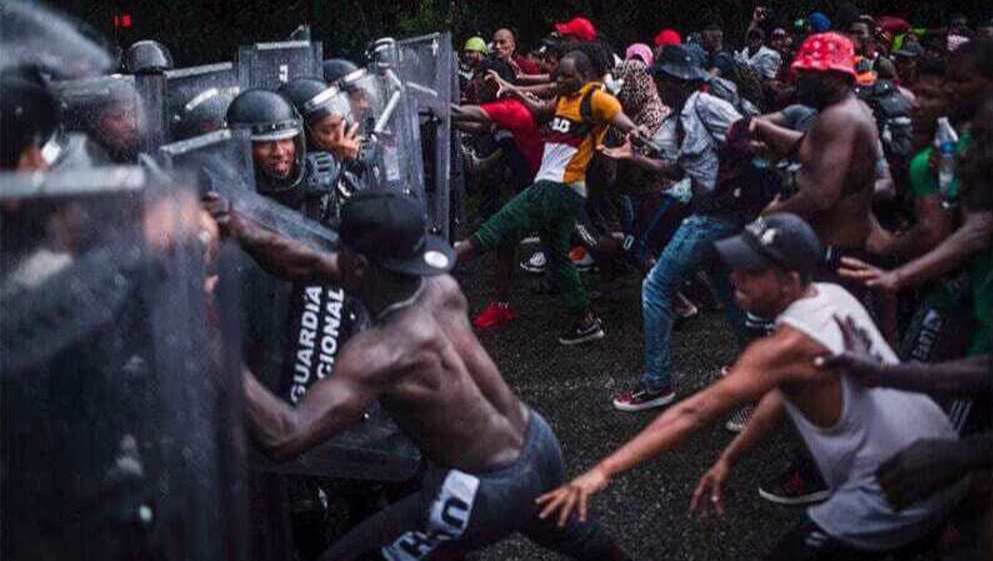
Migrants clash with Mexican National Guards in Chiapas, Mexico, on August 28
Mexico City, September 1 (RHC)-- Mexico’s National Migration Institute (INM) has condemned the beating by its agents of a migrant that was caught on camera during a recent standoff.
Mexico National Guards and IMN agents were deployed on a coastal highway in Chiapas State to stop a caravan of 700 Central American refugees. The migrants, coming from El Salvador, Honduras, Guatemala, and Haiti, had left the southern city of Tapachula on the same day for Mexico City to seek expedited asylum.
Video footage showed National Guard members equipped with shields blocking the highway. More than 80 migrants were detained, while others fled to nearby communities and villages to avoid detention.
One video posted on social media showed a National Guard helping an IMN agent to brutally knock an immigrant to the ground while another agent kicked him in the face. Another video showed guards beating a migrant carrying a child.
Earlier, IMN condemned the actions of its agents in a statement. It also announced that two agents had been suspended and an internal inspector would determine additional punishment later on. The statement added that their conduct had been “inappropriate” and “no conduct outside human rights protocols and policies will be tolerated.”
Amnesty International’s Mexico office called on Twitter for the Mexican government “to act with a humanitarian approach in the face of the arrival of Central American and Haitian migrants fleeing the violence and crisis generated by natural disasters.”
Mexico has seen increased arrivals of undocumented migrants, many of them heading toward the U.S. border, since U.S. President Joe Biden’s arrival in the White House. A surge in migration to the United States this year reached a record high in July.
Former U.S. president Donald Trump had pressured the Mexican government to prevent the caravans of US-bound migrants on its territory from reaching the U.S. border. Mexico has positioned more than 27,000 members of the security forces along its southern and northern borders in order to control the migration influx.

